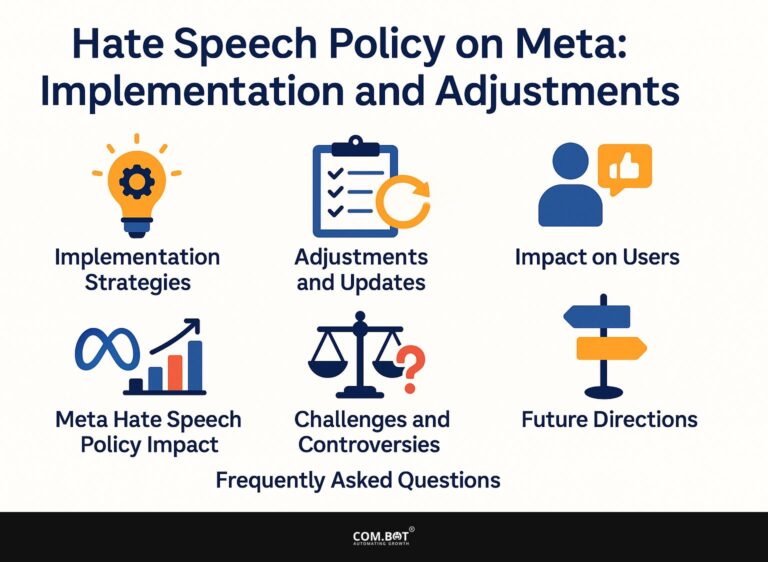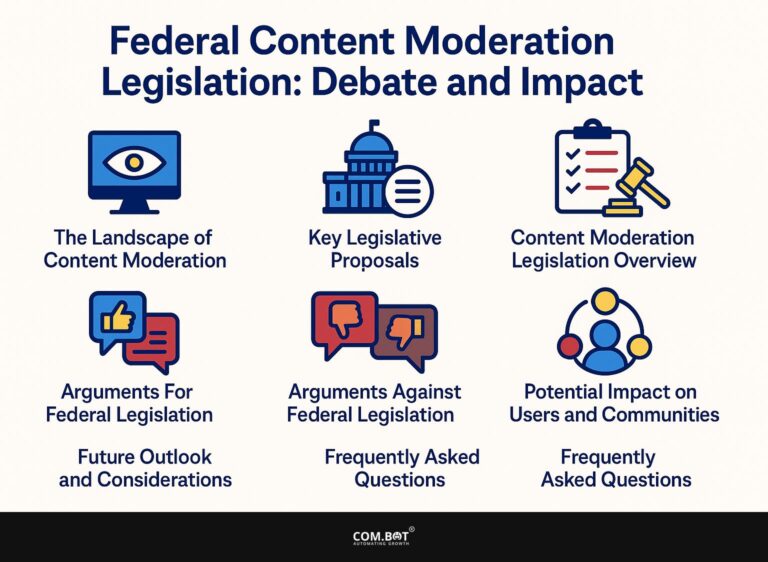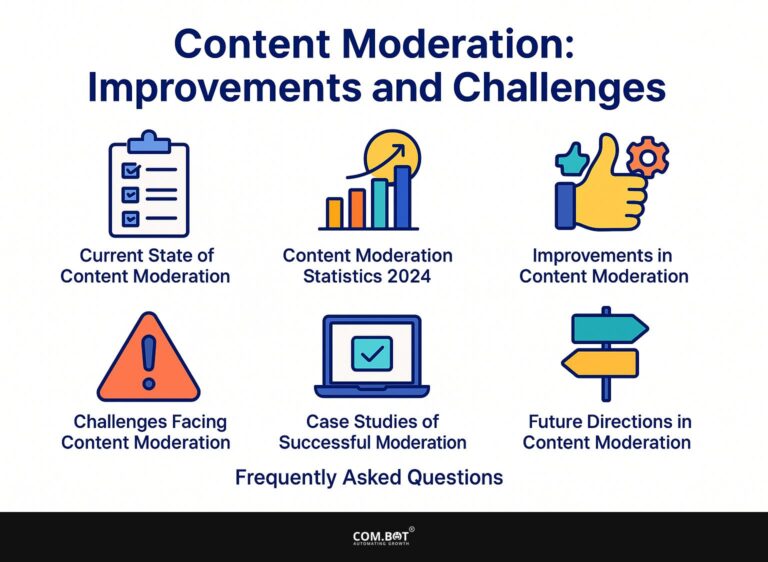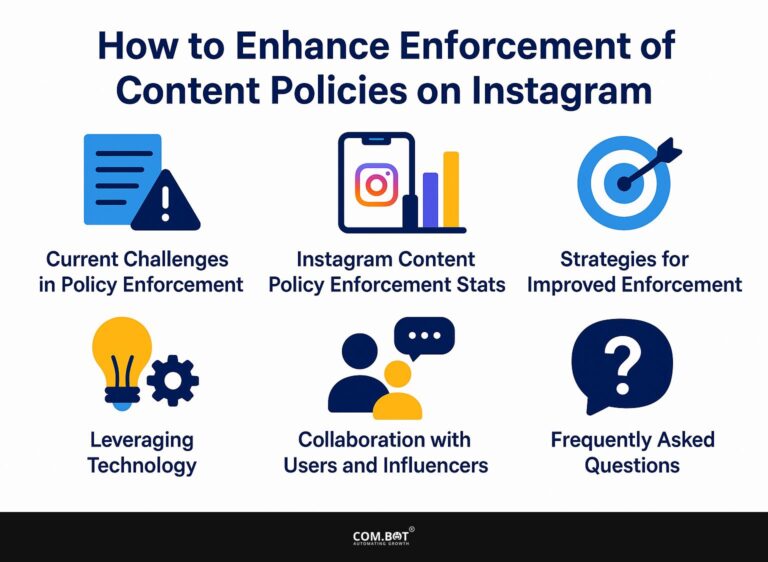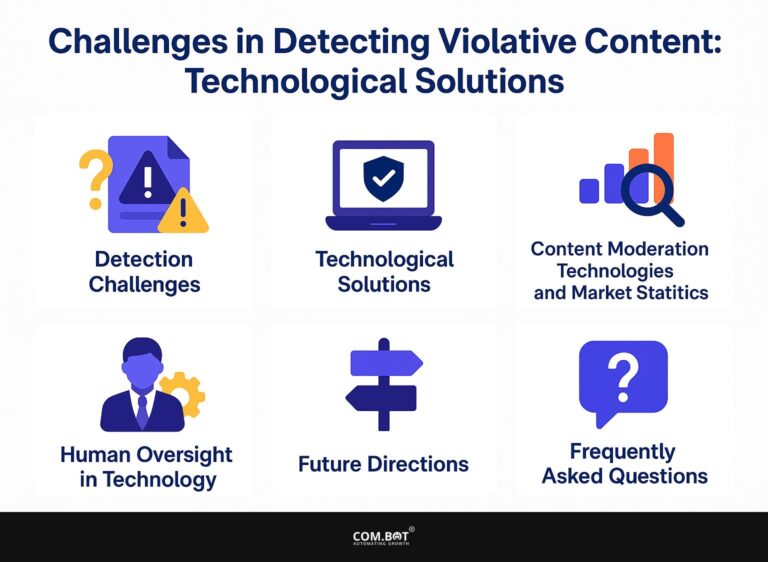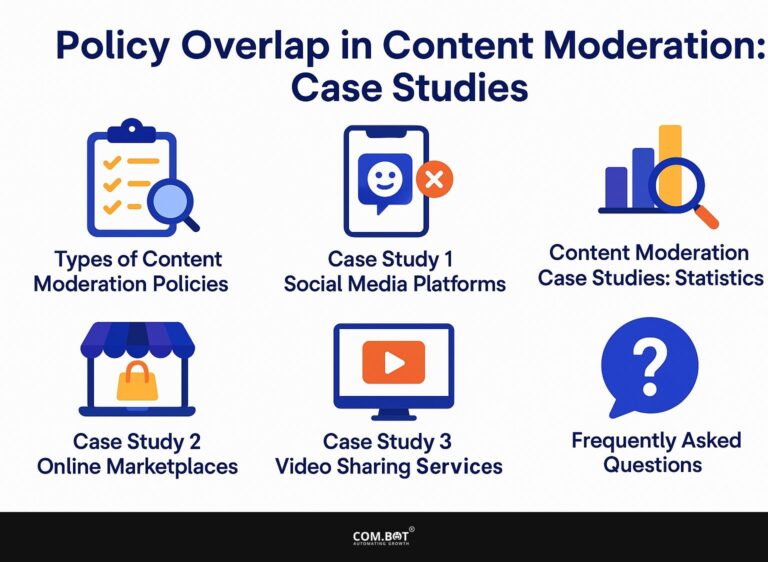Content Moderation: Transparency, Challenges, and Strategies
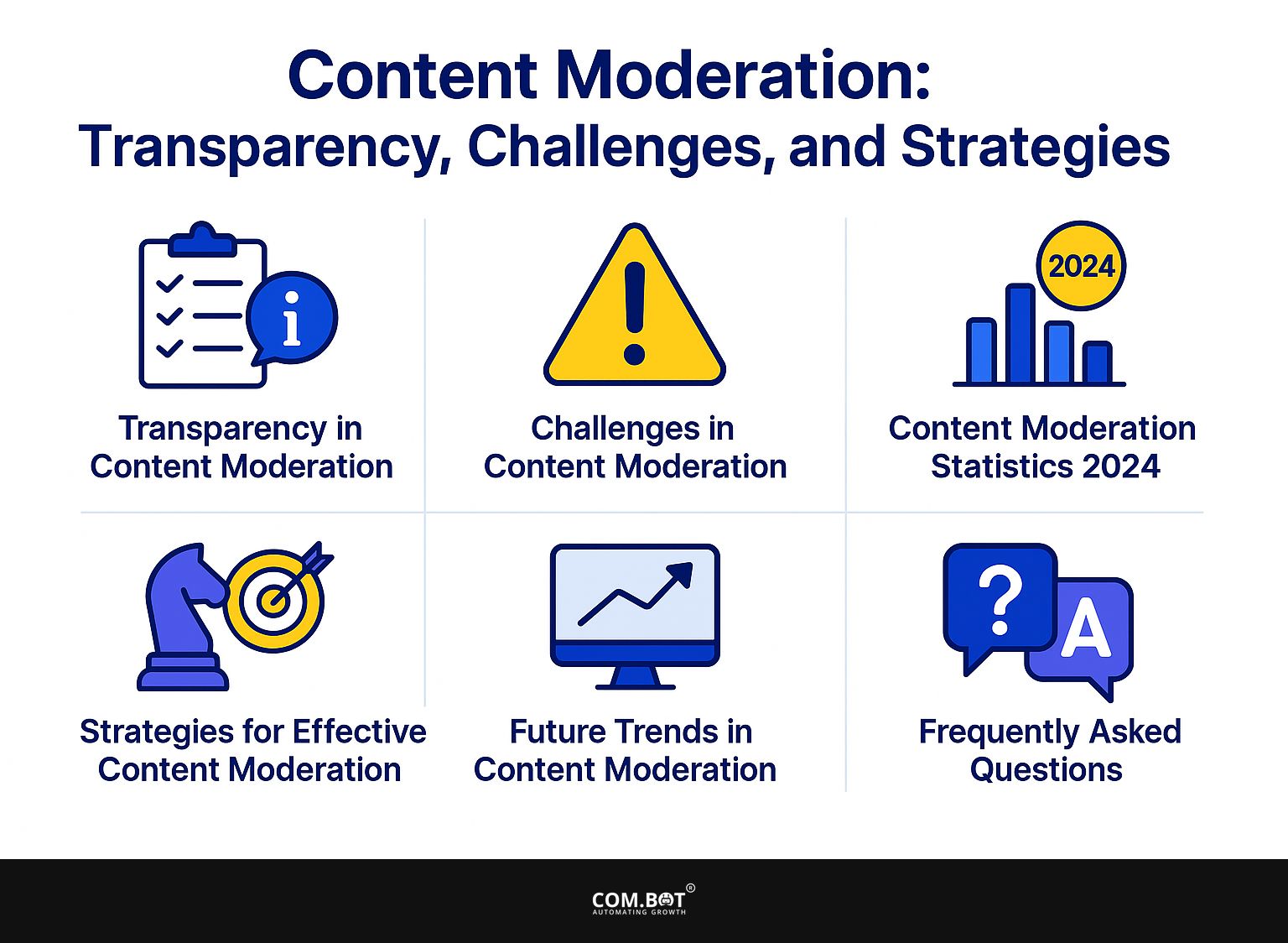
Today, good content management is important for making internet platforms safe and welcoming. As user-generated content surges, the need for clear community guidelines becomes increasingly important.
This article examines the problems of managing content, covering issues with clarity and how AI influences planning. Learn how online platforms can address these challenges to create safer and more interesting spaces for their users.
Key Takeaways:
- Being open is important in content moderation because it helps create trust and responsibility for the platform and its users.
- Challenges in content moderation include the overwhelming volume of content and the subjective nature of identifying inappropriate content.
- Ways to manage content well include using computer programs and artificial intelligence, along with clear rules for the community and teaching users.
- 1 Transparency in Content Moderation
- 2 Challenges in Content Moderation
- 3 Content Moderation Statistics 2024
- 3.1 Content Moderation Overview: Market Growth Projections
- 3.2 Content Moderation Overview: User Engagement
- 3.3 Content Moderation Overview: Bluesky Growth Statistics
- 3.4 Content Moderation Overview: Moderation Actions
- 3.5 1. Volume of Content
- 3.6 2. Subjectivity and Bias
- 3.7 3. Legal and Ethical Considerations
- 4 Strategies for Effective Content Moderation
- 5 Future Trends in Content Moderation
- 6 Frequently Asked Questions
- 6.1 1. What is Content Moderation and why is it important?
- 6.2 2. What role does transparency play in Content Moderation?
- 6.3 3. What are some of the challenges faced in Content Moderation?
- 6.4 4. How can technology aid in Content Moderation?
- 6.5 5. What are some effective strategies for implementing Content Moderation?
- 6.6 6. How can users help with Content Moderation?
1. Definition and Importance
Content moderation involves checking content created by users to follow community rules and keep the online space safe. Effective content moderation is important for promoting positive online interactions. Websites like YouTube use software and people to examine flagged content and quickly address material that violates rules.
Reddit, on the other hand, relies heavily on community moderators who set and enforce specific rules for their subreddits. This two-part method improves user experience and builds trust in the community.
For those managing smaller forums, considering tools like Discourse or Muut can facilitate moderation efforts through customizable settings and user reports.
2. Historical Context
The evolution of content moderation has shifted from manual checks to sophisticated algorithm-driven strategies, reflecting the growing complexity of online interactions.
In the early days of the internet, content moderation relied heavily on human moderators who enforced basic rules in forums and chat rooms. The launch of community guidelines by Facebook in 2016 brought a clear set of rules for how users should act.
Fast forward to today, AI-driven systems analyze vast amounts of data to detect harmful content in real-time. Tools like Sift and Google Jigsaw use machine learning to improve the accuracy of their systems. They change as online spaces change and as the need for detailed moderation grows.
Transparency in Content Moderation
Being open about how content is managed builds trust with users and helps platforms follow ethical rules when handling different types of content. This approach aligns with the principles of human-centric moderation, which emphasizes user trust and ethical practices in content management.
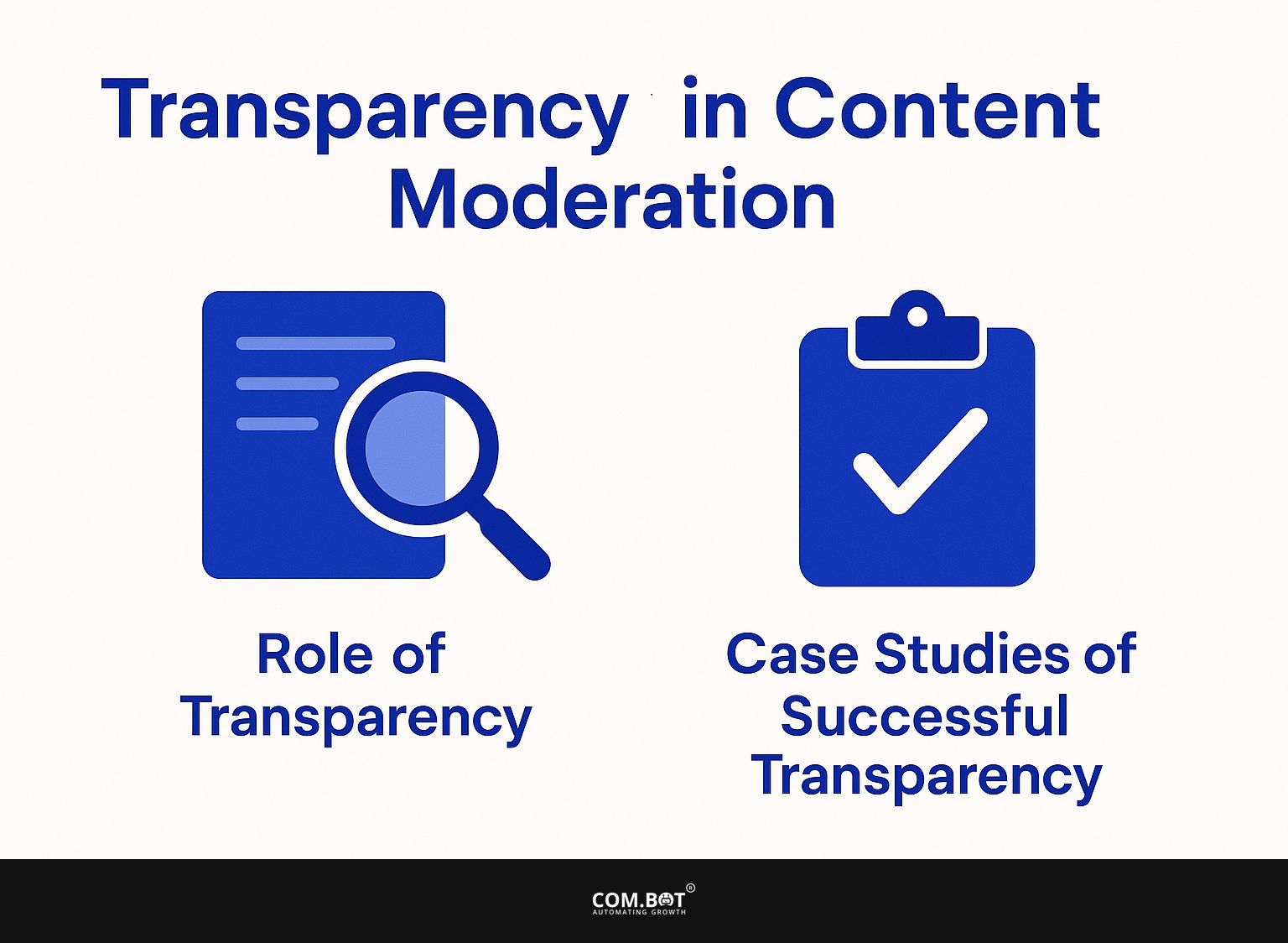
1. Role of Transparency
Being open about how content is managed is important because it shows how choices are made and holds platforms responsible.
Twitter’s transparency reports explain how moderators deal with user content, showing how many tweets are flagged and removed.
In their latest report, they disclosed that over 9 million tweets were removed for violating policies in just one quarter. By sharing this data, Twitter helps users trust the platform, as they can see how moderation works and understand how their actions relate to the overall system.
Platforms can adopt similar practices by regularly publishing moderation metrics, thus reinforcing user engagement and confidence in their systems.
2. Case Studies of Successful Transparency
Facebook has set a precedent in transparency with its regular updates and detailed reports on content moderation actions taken per community standards. One key project is the Community Standards Enforcement Report, which gives monthly updates on content removal events and why they happened.
For example, the latest report revealed a 20% increase in action taken against hate speech, demonstrating their commitment to tackling harmful content. Facebook’s transparency tools, like the Ad Archive, allow users to view ads related to specific topics, ensuring that advertisers are held accountable.
While these measures show progress, questions remain about the efficacy and consistency of enforcement, suggesting room for improvement.
Challenges in Content Moderation
Content moderation is important but has big problems that can make it less effective and put community safety at risk.
Content Moderation Statistics 2024
Content Moderation Statistics 2024
Content Moderation Overview: Market Growth Projections
Content Moderation Overview: User Engagement
Content Moderation Overview: Bluesky Growth Statistics
Content Moderation Overview: Moderation Actions
The Content Moderation Statistics 2024 offers a detailed view of changes in content moderation, focusing on market growth predictions, how users interact on social media, and how well moderation works on platforms like Bluesky.
Market Growth Projections show significant expansion, with the content moderation market valued at $7.5 billion in 2024, expected to grow to $23 billion by 2032. This growth shows a higher need for strong moderation systems to handle more user-generated content and keep platforms safe and trustworthy.
- User Engagement: With 66% of the population actively engaging on social media, averaging 2 hours daily, platforms face challenges in managing vast amounts of content. This shows how important it is to handle content effectively to maintain users’ trust and the platform’s positive reputation.
Bluesky Growth Statistics highlight rapid expansion, with 23 million new users and a 1700% increase in user reports, totaling 6.48 million reports. These statistics emphasize the pressures faced by moderation teams in scaling operations to cope with increased activity. Using AI technology can improve how quickly and accurately we process the increase in reports.
- Moderation Actions: The removal of 66,308 accounts and 35,842 spam and bot profiles indicates active efforts to maintain platform integrity. This proactive stance is supported by a 400% growth in moderation team size, showcasing commitment to improving the moderation process.
The Content Moderation Statistics 2024 describes a sector ready for significant growth, driven by the demand for advanced moderation tools and increasing numbers of users. As social media platforms grow, so does the necessity for scaling moderation resources, employing advanced technologies, and maintaining user trust through effective content management.
1. Volume of Content
The huge volume of content posted daily on different platforms is challenging for content moderators. To effectively manage millions of posts, platforms like Instagram employ a dual approach combining AI tools and human moderators.
The AI first filters out obvious violations, such as hate speech or nudity, using machine learning algorithms trained on thousands of examples. Human moderators then review flagged content for context and details.
For example, Instagram uses its moderation tool that applies natural language processing to find harmful words, and a group of trained experts checks the difficult cases to make sure they are understood correctly. This mix improves how things work while keeping community rules.
2. Subjectivity and Bias
Subjectivity in content moderation can lead to inconsistent enforcement of community guidelines, often exacerbated by algorithmic bias.
For instance, platforms like Reddit have faced backlash over the removal of posts that some users deemed politically biased. To improve fairness, moderation teams can use strategies like setting clear rules, having a diverse team to show different views, and regularly checking removed content.
Tools like ModBot can manage moderation tasks and make decision-making clear. This open-minded strategy lowers bias and encourages a community that is open to all.
3. Legal and Ethical Considerations
Handling legal and ethical guidelines for content moderation is important for platforms to reduce risks and safeguard user rights.
In the U.S., Section 230 of the Communications Decency Act protects platforms from liability for user-generated content, allowing them to moderate without fear of legal repercussions. This protection comes with the responsibility to implement fair moderation processes.
For instance, platforms should adopt transparent content guidelines and consistently apply them to avoid allegations of bias. Using tools like moderation bots along with human supervision can make the process more efficient and responsible.
Ethical considerations, including user privacy and freedom of expression, must also guide moderation strategies to retain user trust.
Strategies for Effective Content Moderation
It’s important for platforms to use good content moderation methods to keep their communities safe and active. Content moderation can be greatly enhanced by understanding different strategies that focus on users, communities, and resource allocation. Related insight: Content Moderation: User, Community, and Spend-Based Strategies
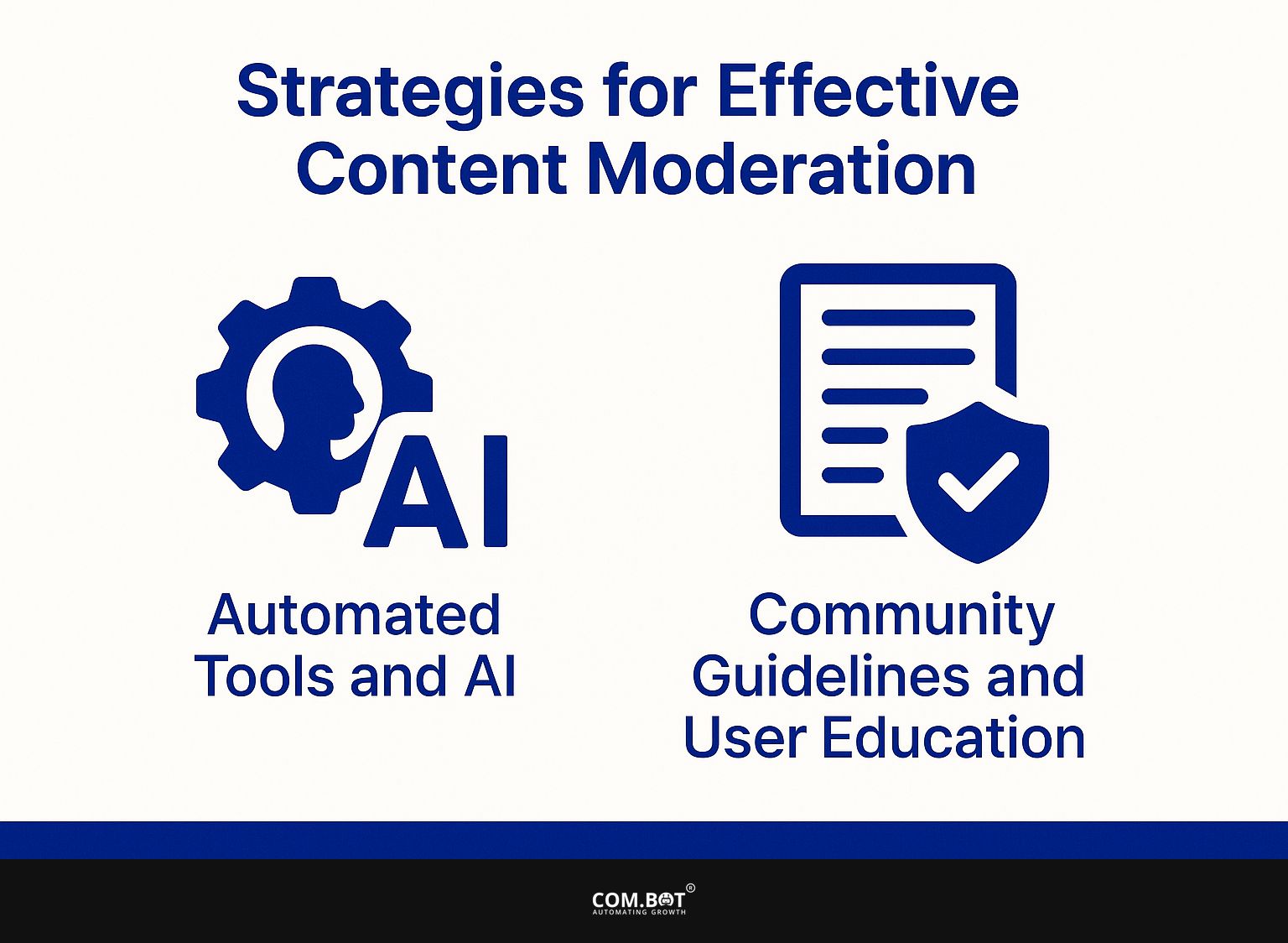
1. Automated Tools and AI
More platforms are using AI-driven tools to speed up and improve content moderation. Google’s Perspective API uses machine learning to evaluate how user comments might affect discussions, helping moderators prioritize which comments to review first.
Another useful tool is Microsoft’s Content Moderator, which can check images and text for unsuitable content, supporting community rules.
These tools save time by filtering out the most harmful content automatically. When combined, they allow moderation teams to focus on complex cases, significantly enhancing overall effectiveness. Implementing such AI solutions can reduce manual workload by up to 80%, streamlining the moderation process.
2. Community Guidelines and User Education
Creating clear rules for the community and teaching users are important parts of effective content moderation methods.
Platforms like Twitch exemplify effective education through structured tutorials that clarify community standards. These resources cover essential topics such as respectful communication, content boundaries, and reporting mechanisms.
For instance, Twitch’s Creator Camp offers interactive lessons where users can learn about maintaining a safe environment while engaging with viewers.
Steps like onboarding checklists and regular updates support expectations and help with compliance. This approach lowers rule violations and helps build a community where users are more engaged and respectful.
Future Trends in Content Moderation
The way content is controlled on online platforms will change due to new technologies and changing worldwide rules. For an extensive analysis of this trend, our comprehensive study on Meta AI’s role in content moderation examines the tools and limitations involved.
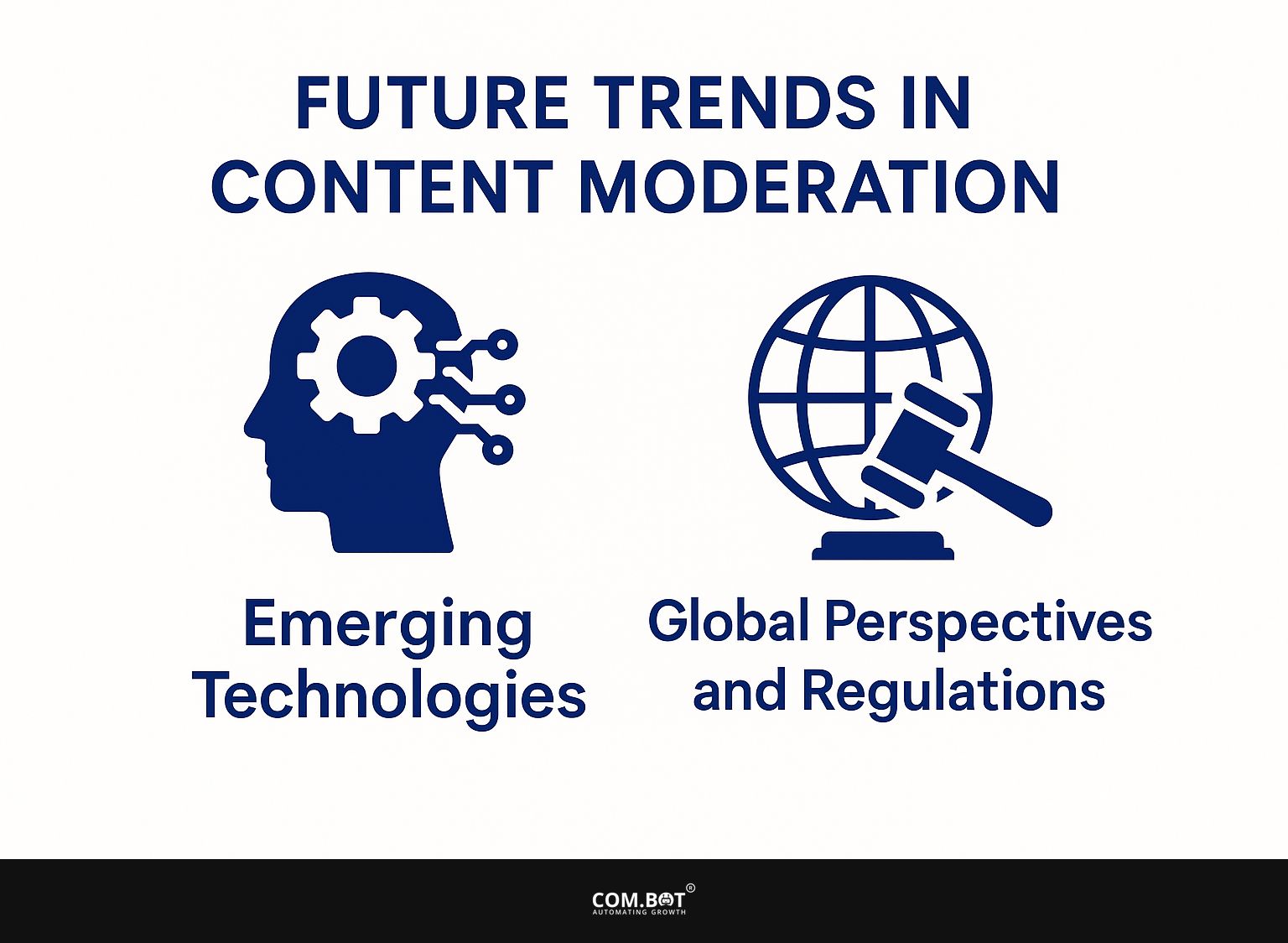
1. Emerging Technologies
New technologies like machine learning and natural language processing are set to change how content moderation is done.
Services like Google Cloud Natural Language API and Microsoft Azure Text Analytics use these technologies to assess feelings and identify unsuitable content with better accuracy.
Using sentiment analysis can cut down the time needed for manual reviews. These tools can quickly process thousands of comments, freeing up moderators to handle more detailed problems.
Platforms like Hive and Clarifai provide customized solutions that meet particular moderation requirements, improving productivity while upholding quality.
2. Global Perspectives and Regulations
As views on content moderation change worldwide, laws are having a stronger impact on how platforms uphold community rules.
For example, the EU’s Digital Services Act requires platforms to evaluate potential risks and use clear processes for managing content. This means companies need to invest in software that can automatically flag harmful content.
Platforms may also need to hire dedicated compliance teams and establish clear reporting mechanisms for users. Using a clear method makes sure we follow rules and build user trust, helping platforms handle the challenges of managing global content.
Frequently Asked Questions
1. What is Content Moderation and why is it important?
Content Moderation involves checking and managing content created by users on different online platforms to make sure it follows community rules and standards. Making sure all users have a safe and suitable online space is important, especially now with the widespread use of social media and online groups.
2. What role does transparency play in Content Moderation?
Being open about how content is managed is important for building trust and reliability between online services and their users. By being open and honest about their content moderation policies and processes, platforms can better communicate their values and objectives to their users, and gain their support and cooperation in maintaining a positive online community.
3. What are some of the challenges faced in Content Moderation?
One of the main challenges in Content Moderation is the sheer volume of user-generated content that needs to be moderated. With millions of users regularly posting content, it’s hard for human moderators to keep track and make sure everything follows community rules. The changing online content and different opinions from users can create difficulties for moderators.
4. How can technology aid in Content Moderation?
Technology can significantly help in Content Moderation by using software to handle some tasks and helping human moderators spot and mark inappropriate content. By using advanced computer programs and artificial intelligence, platforms can quickly and accurately remove suspicious content, letting human moderators deal with more difficult problems.
5. What are some effective strategies for implementing Content Moderation?
One strategy for effective Content Moderation is to clearly define and communicate community guidelines to all users. This sets a standard for acceptable behavior and content and provides a basis for moderation decisions. Collaborating with users and involving them in the moderation process can also encourage a sense of responsibility and respect among the community.
6. How can users help with Content Moderation?
Users can help with Content Moderation by reporting any inappropriate or violating content they come across. By flagging such content, they can bring it to the attention of moderators and help maintain a safe and positive online environment for all. Users can follow community rules and report any breaches they notice, helping to maintain a self-governing and responsible online community.
